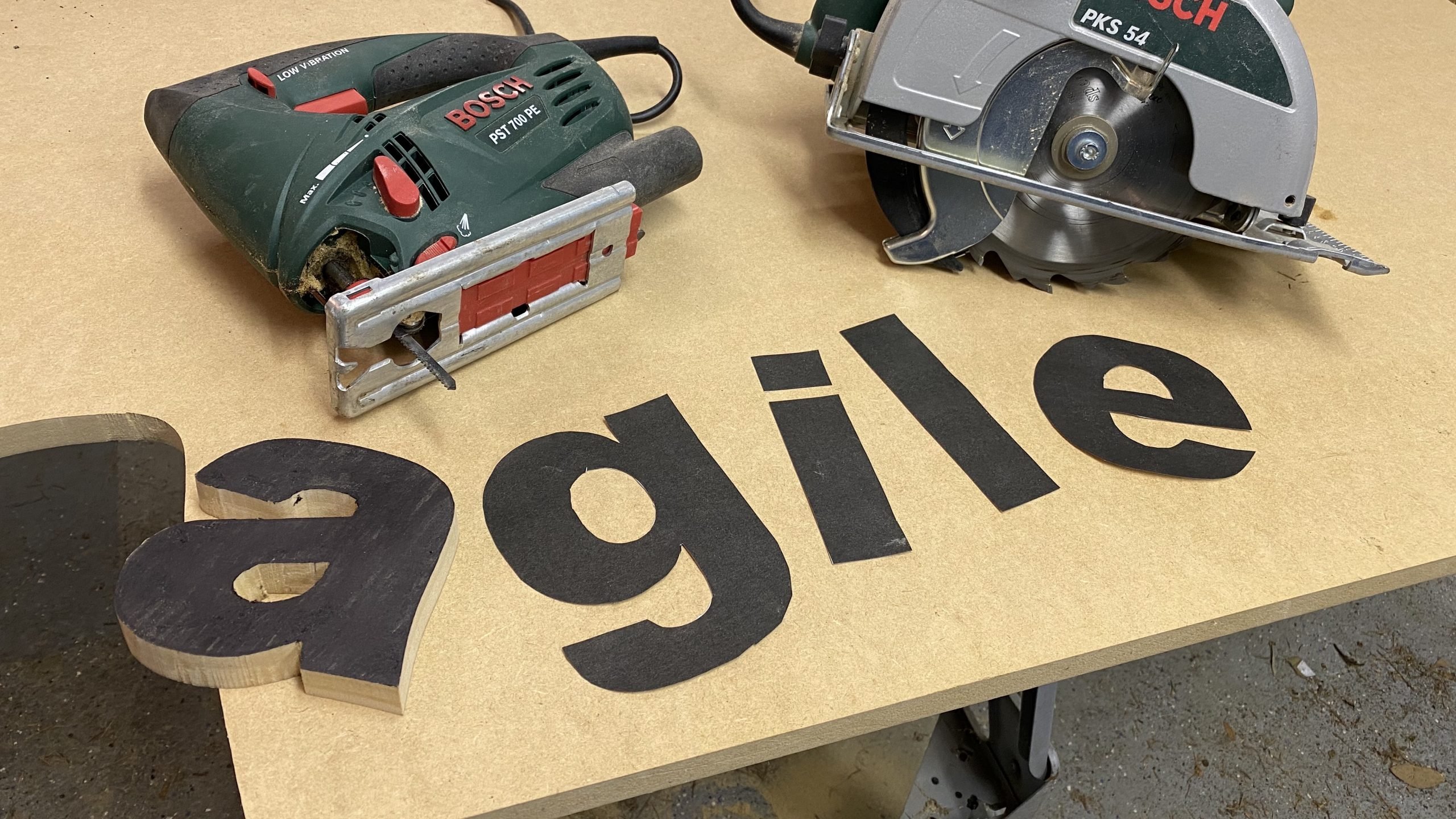
Roel Wessels is a physicist, keyboard player in bands and in daily life project manager for Holland Innovative. Here he blogs about his experiences in the world of high-tech. “I’m the project manager in the music band and the artist in the development team.
Agile and Scrum are two important terms in my book ‘The Complete Project Manager‘. Not strange of course, because these terms are indispensable in today’s world. What is striking is that they are still sometimes misunderstood or misinterpreted. Sometimes we seem to live in a society in which complexity is solved by black and white thinking. So we have the believers who think that nothing is possible without Agile and Scrum, and the people who think this is all just modern stuff. Of course, there are more shades than black and white. That’s why I thought it was high time to separate sense from nonsense and help people to really apply it. This blog is about Agile, the thought process, the next one will be about Scrum, which is an approach to working Agile in a development team.
The Romans were also agile
To dispel a myth straight away, Agile and Scrum are not that innovative at all. Don’t get me wrong, the Agile Manifesto, which was drawn up in 2001 by 17 software pioneers, is a wonderful summary of values and principles, but the Romans were already agile. For example, Julius Caesar was known for always taking the initiative in non-ideal situations and having his army excel by building his (self-organizing) teams around motivated individuals. But even more important, he was able to flexibly use changing circumstances (such as bad weather and other setbacks) to his advantage during campaigns – in addition to having a well-considered plan – and thus surprised and defeated his inflexible opponents. Julius Caesar embraced change.
Agile mindset
Agile (the Italian musical term agile means ‘fast’) considers uncertainties as a given and not as something undesirable. Agile methods are, therefore, usually about the way in which you can deal with changes in an agile way. But it’s more than that, because in order to do so, you have to change your way of thinking. The Agile Manifesto shows that we have come to value:
- Individuals and interactions over processes and tools
- Working software over comprehensive documentation
- Customer collaboration over contract negotiation
- Responding to change over following a plan
That is, while there is value in the items on the right, we value the items on the left more.
So this Agile mindset is much more than being agile. It’s a mental masterpiece. Come up with a good plan and prepare yourself in such a way that you don’t have to be annoyed by abnormalities, but can take advantage of them. Negotiating a contract with the client, but above all working on the relationship to ‘make the cake bigger’ together in case of changes instead of rigidly sticking to the original agreements. Setting up structures and rules that promote human interaction and autonomy instead of hindering it. Just stand by it.
The sailor who knows how to make the best use of the available wind wins the race
Agile behaviour is, therefore, more than just switching a button. It is the result of a long road of personal development. Something Stephen Covey actually told us in his book ‘The Seven Habits of Highly Effective People’. Properties 1, 2 and 3 are about your development in relation to your own functioning, being able to act independently as an individual. Properties 4, 5 and 6 are about how you can effectively deal with your environment, where Covey explains that working together is not that simple at all, because it means making yourself interdependent. And now it comes, you can only be interdependent (controlling relationships) if you are personally independent (controlling yourself). Agile behaviour is, therefore, a result rather than a starting point.
But it’s a nice result that can lead to enormous efficiency gains. Therefore, try to see Agile behaviour more as taking advantage of changes rather than adapting to them. I often explain that with an example from the sailor. Which sailor wins the race? The most agile sailor? That’s only half the answer. The sailor, who is best able to estimate the wind and currents and make use of them, wins the race. This requires a combination of technical, physical but above all mental skills. The Agile project manager does not resist the unruly environment but uses it to his or her advantage. The project manager as an influencer!
TomTom behaviour
Applying Scrum (we’ll go into that in more detail in the next blog) can certainly help, but in my book, I prefer to use the TomTom metaphor as a starting point for Agile project management. The TomTom navigation tool is extremely result-oriented and always has a plan (the route) ready. But on top of that, TomTom loves rescheduling as a result of setbacks and immediately attunes the consequences of each change with the driver. The goal is more important than the route. “Sorry, I’ve just created a traffic jam” – you won’t hear your navigator say such a thing any time soon. It’s all about making the most of the possibilities of the moment and offering alternative scenarios to the driver. You only really have a problem if you discuss a problem (the traffic jam) too late. It’s a good example of how you can be goal-oriented, flexible and communicative. And how, with the right behaviour, you can turn problems into common challenges, something that is crucial in complex environments.
Jigsaw and circular saw
My most important tip for today is: ignore the hype, delve into the essentials of project management and Agile leadership and make development steps that you can understand and oversee. Keep in mind that no method is beatific, the adopter makes the difference. For example, a manoeuvrable jigsaw is super fine for cutting curves, but if you want to cut a 2-meter plate with a straight line, you’d really better take a traditional circular saw…
Become an influencer. Don’t resist changes, but accept how it is and initiate those changes yourself that will help you and your team move forward!
Next time we will discuss Scrum, an implementation form of Agile project management.







